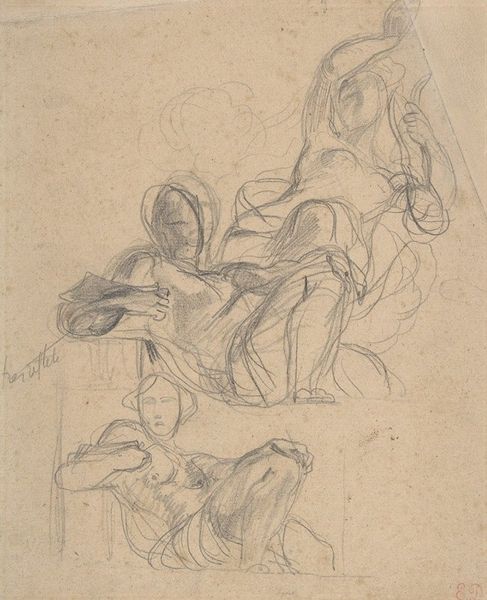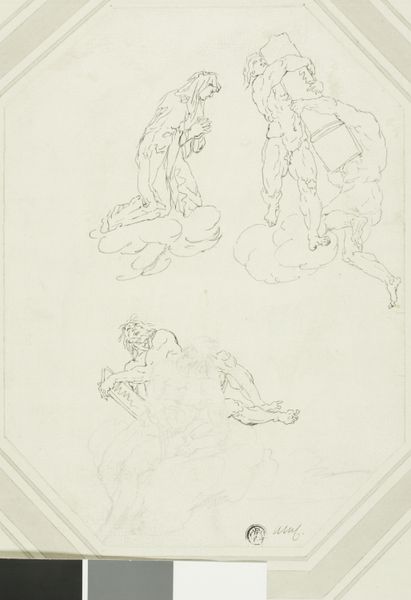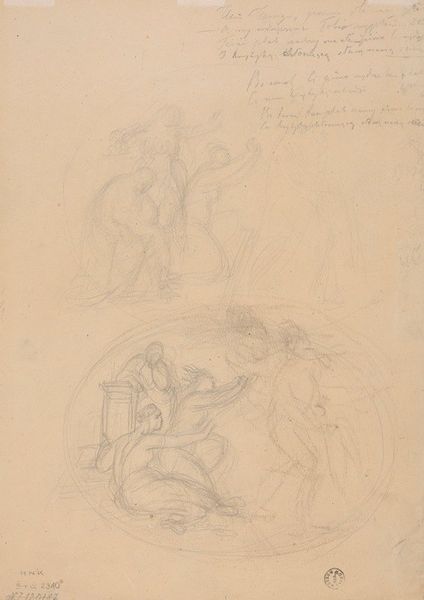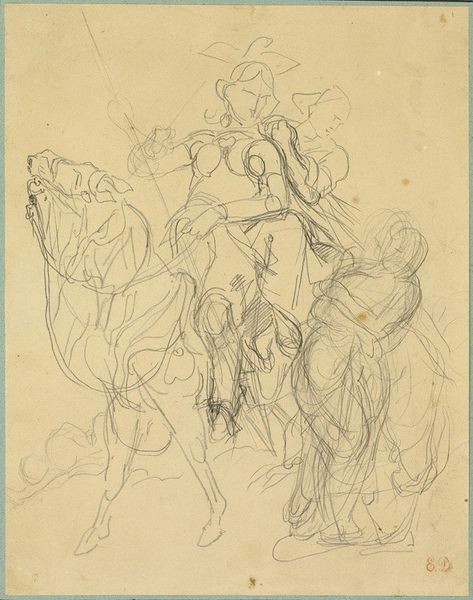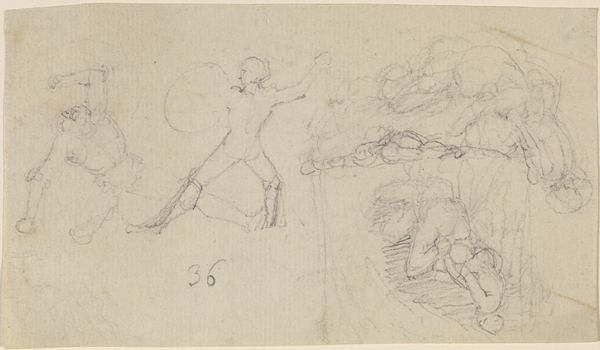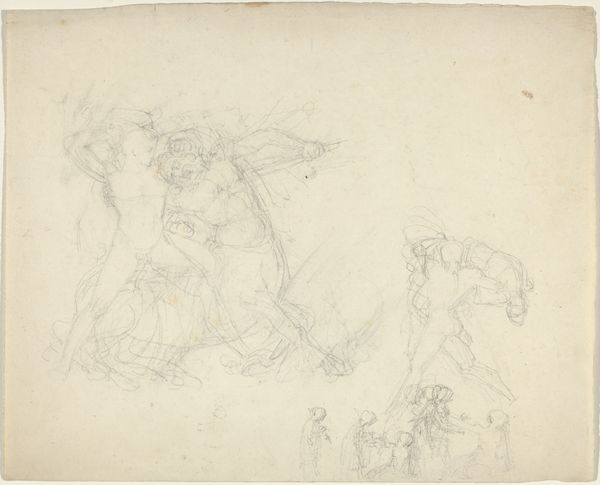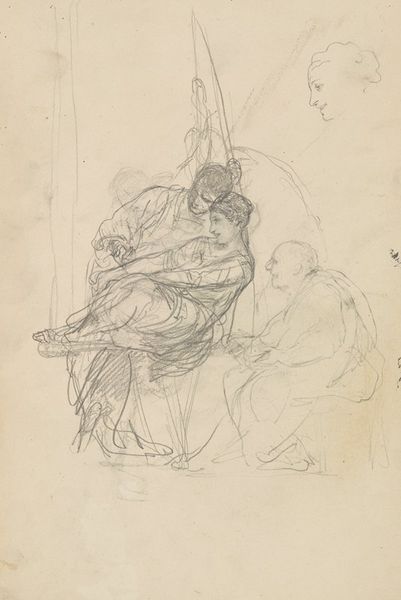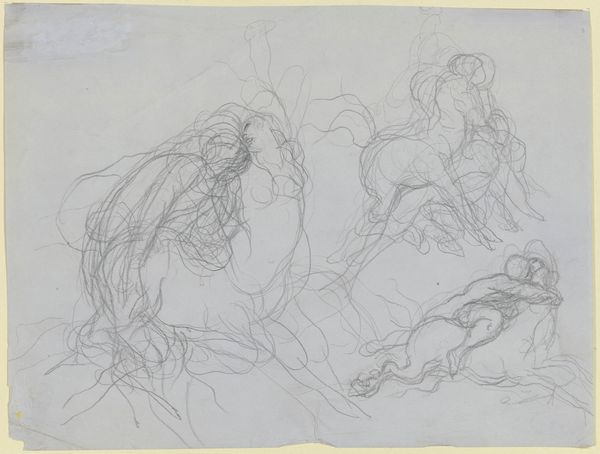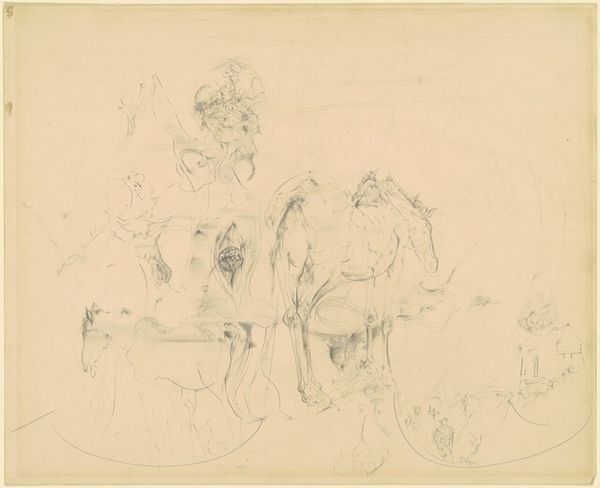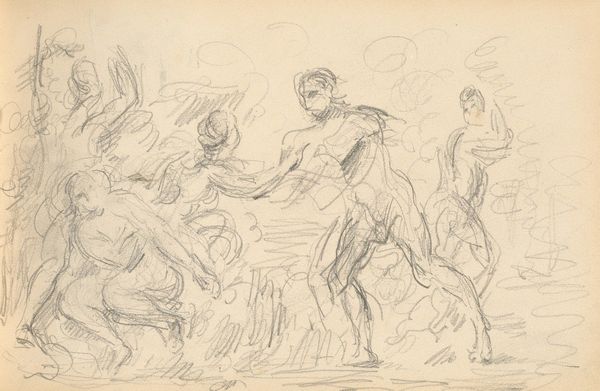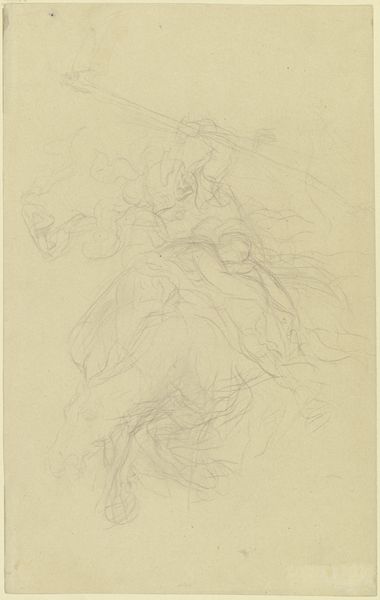
szkic postaci Andromedy oraz sylwetek z rydwanu zaprzężonego w łabędzie do plafonu ‘Andromeda’ w pałacu J. Neczajewa-Malcewa w Petersburgu 1883 - 1884
0:00
0:00
drawing, pencil
#
drawing
#
imaginative character sketch
#
light pencil work
#
fantasy-art
#
cartoon sketch
#
figuration
#
personal sketchbook
#
idea generation sketch
#
ink drawing experimentation
#
pen-ink sketch
#
pencil
#
sketchbook drawing
#
history-painting
#
academic-art
#
sketchbook art
#
fantasy sketch
Copyright: Public Domain: Artvee
Editor: Here we have Henryk Siemiradzki’s pencil sketch from 1883-84, "Study of Andromeda and figures with a Swan-drawn Chariot for the ‘Andromeda’ ceiling in the Palace of J. Nechayev-Maltsev in St. Petersburg.” It's so light and airy. What strikes you most about it? Curator: What intrigues me is how this seemingly classical sketch operates within the context of 19th-century Imperial Russia. Siemiradzki, celebrated for his academic art, was nevertheless participating in the visual rhetoric of power. These sketches aren't just about aesthetics; they’re about legitimizing a certain social order. How does this connect, perhaps problematically, to the Andromeda myth itself? Editor: Problematic how? It just seems like a beautiful drawing to me, I’m not sure that I see any connection to any power dynamics. Curator: Think about Andromeda's narrative: a princess chained and offered as a sacrifice. Consider, too, that 19th century Russia, while modernizing, was deeply patriarchal. Is there a way this visual glorification, even in sketch form, implicitly normalizes or aesthetically justifies subjugation of marginalized identities by an aestheticization of the feminine form, like Andromeda’s figure in this study? And furthermore how this act can reflect the aesthetic consumption of art for male consumption in that period? Editor: Wow, I hadn't thought about it that way. Seeing it connected to power dynamics really does give it a whole new dimension. Is it right to feel a little uneasy looking at it now? Curator: Unease is good. It means you're critically engaging. Recognizing the social and political layers within seemingly straightforward artworks encourages deeper understanding and dialogues. Editor: I definitely learned a lot by looking past the immediate beauty of the image. I will remember this context going forward.
Comments
No comments
Be the first to comment and join the conversation on the ultimate creative platform.
